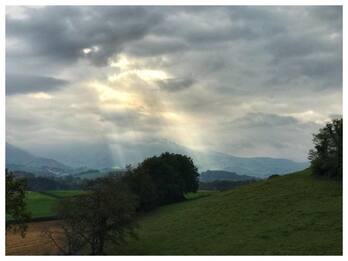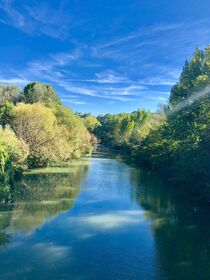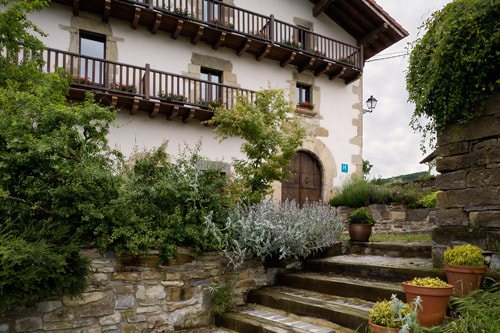|
Grab your free copy of our Complete Guide to the Camino Packing List here
|
|
Popular Camino de Santiago Routes Compared
Spanish Camino Routes (The Camino Frances) Pros and Cons

There are a number of different Camino de Santiago routes. The main route that crosses Spain from St. Jean Pied de Port to Santiago de Compostela is known as the Camino Frances, because it starts in France. (Yes, this does make it confusing :). Besides being historically accurate and used since Roman times, this route is fascinating, filled with the most important cathedrals, art, ancient Roman roads and beautiful scenery. That said, it has all the guesthouses, cafes and amenities that a pilgrim could ask for. We recommend that you begin your pilgrimage on the Camino Frances for understanding the Camino’s spirit and powerful history.
The only downside is that this route is where the vast majority of pilgrims are walking, so in the high seasons you might be fighting for accommodations.
Astorga to Santiago Route Pros and Cons

The final 200 km of the Camino marks the minimum walking needed to attain your “Compostela” or certificate of completion. Although it’s definitely cool to have your name written in Latin lettering, we believe that the more time spent walking and feeling the mysteries and beauty of the Camino, the sweeter will be your arrival in Santiago. So why go for just the minimum? Other cons are that this is the most crowded section of the trail as so many people start in Astorga for the credential.
The pro is that walking through Galicia, the province of this section of the Camino, has deep Celtic roots and is beautifully green and mountainous. But all the verdant hills means it’s likely to rain.
The Camino del Norte Route Pros and Cons
The Camino del Norte is primarily a walk along the breathtaking coast of Northern Spain. Although the historical accuracy is highly debatable, the natural beauty provides a different type of Camino experience. The most obvious difference is that the Norte route is much more strenuous than the Camino Frances and the distance is longer. Very little of the Norte route is flat with the trail following the ups and downs of the ocean-carved cliffs. This makes for a LOT of ascent and descent each day.
There are also fewer cafes, guesthouses, water fountains and food stops so your backpack will need to be heavier than on the Camino Frances. Whereas on the Camino Frances there are guesthouses every 5 or 10 km, the del Norte has far fewer, so no matter how tired you feel you will be going the extra kilometers to reach shelter.
There are also fewer cafes, guesthouses, water fountains and food stops so your backpack will need to be heavier than on the Camino Frances. Whereas on the Camino Frances there are guesthouses every 5 or 10 km, the del Norte has far fewer, so no matter how tired you feel you will be going the extra kilometers to reach shelter.
Walking the Camino de Santiago in France Pros and Cons
Walking in France provides beautiful scenery and often fabulous French home cooking, once you are past Cahors. It’s all sausage and potatoes from Le Puy to Cahors; beware vegetarians. We do not recommend walking in France unless you are strong enough to carry a large pack and are highly conversational in French. The route is 95% French natives and the degree of second language is low compared to the Camino Frances where proprietors will usually have basic English. As along the Camino del Norte, guesthouses are spread far apart and finding open restaurants, grocery stores and cafes can be challenging. France’s young population is moving to the cities, which leaves many of the small Camino towns sparsely populated. Bakeries, cafes and grocery stores can be long-closed when you arrive, or just closed for the religiously-observed French siesta, where shops close 12:30pm-2pm.
You may be wondering which Camino route we use...

Our tours are not a mass market experience; each trip is carefully cultivated, to combine a unique group of people. Some may be seeking transformation, deeper peace or a chance to reflect on life and come back to purpose. It is a deeply personal experience and protecting that experience is our first priority. If we posted our exact route online, corporate travel groups would take over the route, diminishing its sacred capacity for our travelers to heal and grow. For this reason, we don't post our chosen routes.
Get in touch with us if you are thinking about joining one of our Camino walks.
How long does it take to walk the Camino trail?
And where does the Camino de Santiago start?
Many people ask us, "how long does it take to walk the Camino de Santiago?" Or, "How long is the Way of St. James?"
Traditionally pilgrims walked out of their front door on the Way of St. James, so the length of time was directly related to their address! For instance, if you lived in Spain, your pilgrimage there and back would be much shorter than for German pilgrims!
Most American pilgrims think of the Camino as “starting” in St. Jean Pied de Port on the French side of the Pyrenees which is about 32 days of walking to reach Santiago. Many Spanish pilgrims skip the long (and potentially nauseating) bus ride over the Pyrenees and start in Roncesvalles or Pamplona, which is 29 days from Santiago. To avoid the pressure of making a flight home, add a few rest days to your plan. This will avoid having to walk faster than your heart desires and possibly missing some precious experiences. Very fit walkers can often walk about 30 or 35 km a day on the Camino Frances, but this is really challenging for everyone else and guess who gets the most injuries? Fit walkers pushing themselves.
The Camino walking distance is going to vary with how you decide to walk. We take 12 days on our walks as its a great amount of time to have a significant or life changing experience without putting your life in storage or having to quit your job.
Traditionally pilgrims walked out of their front door on the Way of St. James, so the length of time was directly related to their address! For instance, if you lived in Spain, your pilgrimage there and back would be much shorter than for German pilgrims!
Most American pilgrims think of the Camino as “starting” in St. Jean Pied de Port on the French side of the Pyrenees which is about 32 days of walking to reach Santiago. Many Spanish pilgrims skip the long (and potentially nauseating) bus ride over the Pyrenees and start in Roncesvalles or Pamplona, which is 29 days from Santiago. To avoid the pressure of making a flight home, add a few rest days to your plan. This will avoid having to walk faster than your heart desires and possibly missing some precious experiences. Very fit walkers can often walk about 30 or 35 km a day on the Camino Frances, but this is really challenging for everyone else and guess who gets the most injuries? Fit walkers pushing themselves.
The Camino walking distance is going to vary with how you decide to walk. We take 12 days on our walks as its a great amount of time to have a significant or life changing experience without putting your life in storage or having to quit your job.
Camino de Santiago Route Maps
Here you can see route maps for all the various ways people opt to walk el Camino de Santiago. Keep in mind this map doesn't cover elevation, which is another factor to consider; both for the beautiful vistas and for your own physical limitations or challenges.
By Manfred Zentgraf, Volkach, Germany - Manfred Zentgraf, Volkach, Germany, CC BY-SA 3.0, https://commons.wikimedia.org/w/index.php?curid=748316
What is the nearest Airport to St. Jean Pied de Port?
Biarritz and Pamplona are the closest airports, both two hours away from St. Jean by public transport, but both are small and expensive to fly into. Most pilgrims starting in St. Jean fly into Barcelona or Madrid, ride the train to Pamplona and then catch the two-hour bus ride to St. Jean. However, the bus only leaves once a day from Pamplona and twice during the summer. It’s always possible to round up other confused looking pilgrims at the bus terminal and pitch in for a taxi if you have missed the bus of the day. In high season these tickets can also sell out. (Another great reason to leave ample time for your Camino.)
How much does walking the Camino de Santiago cost?
Red Monkey guided pilgrimages include boutique accommodations, a skilled guide and facilitator fluent in the local language and hidden knowledge, private vans for transport and resources that come from walking a LOT. You won’t find this as a novice pilgrim. We take care of all logistics so that you can focus on enjoying every step of your walk. Our prices are more than walking on your own, but we have competitive prices (if not cheaper) for guided walks which run between $4,000 - $6,000 for guiding companies.
Many companies use buses to shuttle pilgrims to the "highlights" of the Camino. We are dedicated to creating an authentic experience of the Camino and use routes of 12 continuous days to deeply enjoy one area, instead of barely seeing many areas. In our experience this is way more fun then hopping on a bus every few days or even every night! Traveling slowly, at the pace of your own feet, is a phenomenal experience we have so little of in modern life. Many people have said that they never want to travel faster again! Seeing less big name sights can actually help you savor and enjoy more the tiny details that bring happiness.
We recommend following your heart and comfort level and choosing the best option for you.
Many companies use buses to shuttle pilgrims to the "highlights" of the Camino. We are dedicated to creating an authentic experience of the Camino and use routes of 12 continuous days to deeply enjoy one area, instead of barely seeing many areas. In our experience this is way more fun then hopping on a bus every few days or even every night! Traveling slowly, at the pace of your own feet, is a phenomenal experience we have so little of in modern life. Many people have said that they never want to travel faster again! Seeing less big name sights can actually help you savor and enjoy more the tiny details that bring happiness.
We recommend following your heart and comfort level and choosing the best option for you.
Grab your Free
Complete Guide to the Camino Packing List
Use our Free Packing List to know exactly what you need to get ready for the Camino. Our Guide is more than just a List, its four pages full of helpful information on the nuts and bolts of walking.
* You probably have almost everything you need already!
* You probably have almost everything you need already!



